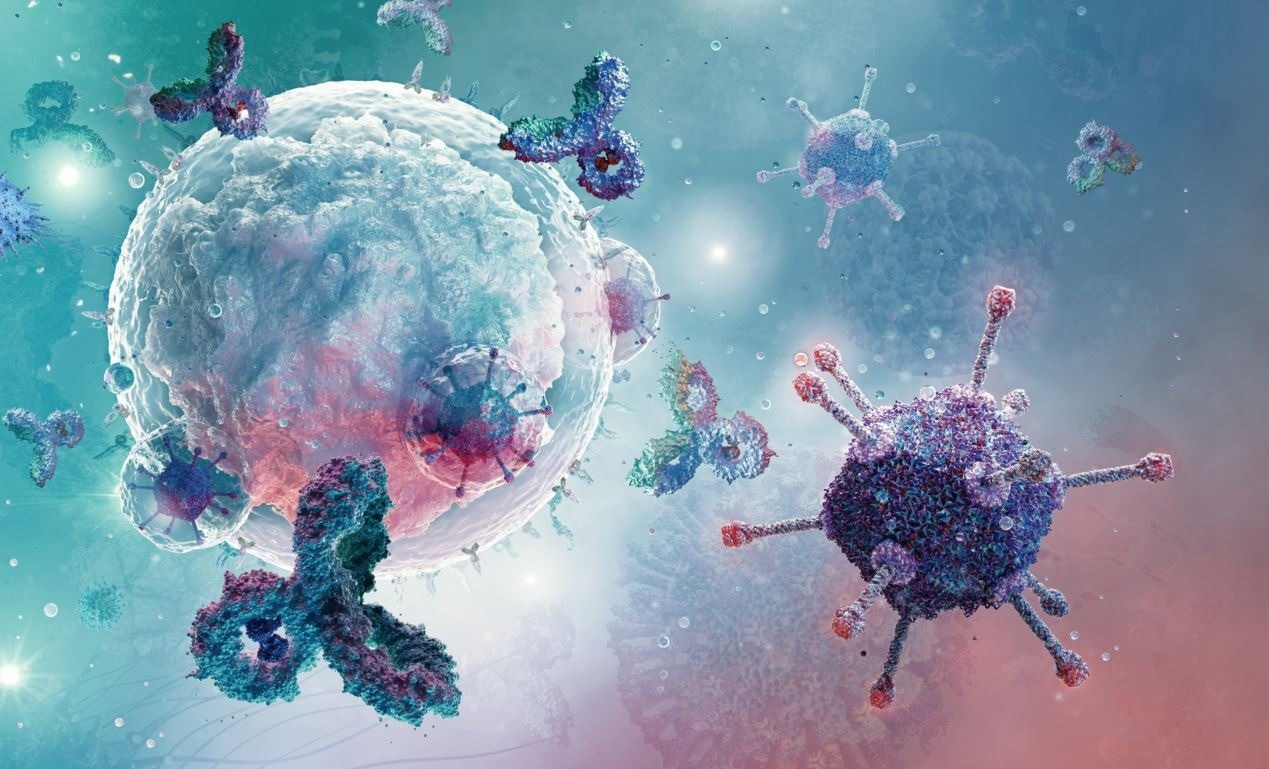Vaccines function by effectively producing immune cells that live for a long time, frequently for decades. These immune cells form a protective barrier that prevents or reduces re-infection and memory that enables one to identify an old invader, such as a virus, and eliminate it before it causes disease.
 Plasma B-cell making antibody. Image Credit: Shutterstock.
Plasma B-cell making antibody. Image Credit: Shutterstock.
The antibody in human blood that serves as a barrier is produced by “long lived plasma cells,” and while the significance of these cells has long been recognized, how and when they are produced following vaccination has been a mystery till now.
A group headed by Dr. Marcus Robinson and Professor David Tarlinton from Monash University’s Immune Memory Laboratory demonstrated how immune memory cells are preserved in the bone marrow at a rate of one single cell per hour for several weeks after immunization. The study was published in the prestigious Science Immunology journal.
To map the slow growth of these cells, the investigators used a genetic system in mice. This system, known as timestamping, enables researchers to permanently record all plasma cells present at a particular time after immunization and then return later to determine those that have survived and are, therefore, long-lived.
By repeating this regularly after immunization, the scientists were able to reconstruct the history of accumulating these long-lived cells, specifying when and where they were formed.
After receiving a vaccine, people are mostly immune to that disease because the body continues to produce antibodies against the immunized disease, effectively keeping people topped up on these antibodies.
Although the body’s lymph nodes, tonsils, and gut are among the locations where these long-lived plasma cells are produced, the exact mechanism by which some vaccinations cause these cells to persist for decades as opposed to others that vanish after a few months has remained a mystery. Given the global interest in long-term immunity conferred by COVID vaccines, understanding this process is becoming increasingly important.
The researchers employed several methods to determine only those plasma cells created by the vaccine and were mainly designed to develop antibodies against that vaccine.
A fluorescent protein was expressed by all plasma cells in the mouse model (called TdTomato protein). Since these cells fluoresced, investigators could observe individual cells as they were produced and retained. They selected those that recognized the vaccination and used the timestamp to determine when those cells were produced and how old they were.
Professor Tarlinton says that investigating these individual cells as they are born, mature, and stored to defend humans against repeated invasion by a specific bacteria or virus “can inform our understanding of how the recruitment of long-lived plasma cells occurs.”
The study’s complexity has permitted the scientists to investigate other aspects of the development of specific immunity, including:
- How these plasma cells enter the bone marrow
- Whether these cells “find” a niche left vacant by previous plasma cells dying or moving elsewhere
- If these plasma cells must displace other cells when they are stored in areas like bone marrow
Mapping these cells indicated that one immunization in a mouse produced around 40,000 persistent plasma cells in the bone marrow. Following the initial flourish, these cells diminish at a rate of roughly 0.1% per day, with a half-life of about 700 days, indicating the duration of protection and revealing the long-lived cells for further research.
Determining how these long-lived plasma cells are produced, live, and die, according to Professor Tarlinton, “will inform our ability to modulate their recruitment, through different vaccine combinations or delivery strategies—ultimately allowing us to be able to increase the longevity of immunity.”
Source:
Journal reference:
Robinson, M. J., et al. (2022) Long-lived plasma cells accumulate in the bone marrow at a constant rate from early in an immune response. Science Immunology. doi.org/10.1126/sciimmunol.abm8389.